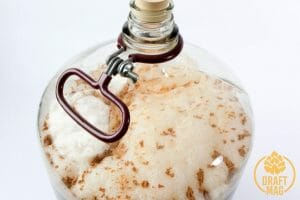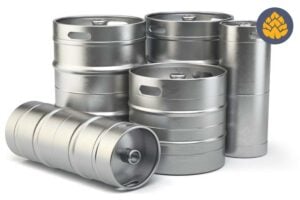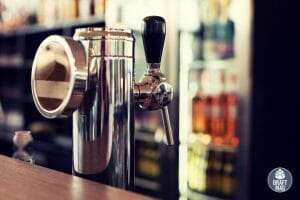Refractometer vs Hydrometer – How To Choose One for Perfect Brewing?
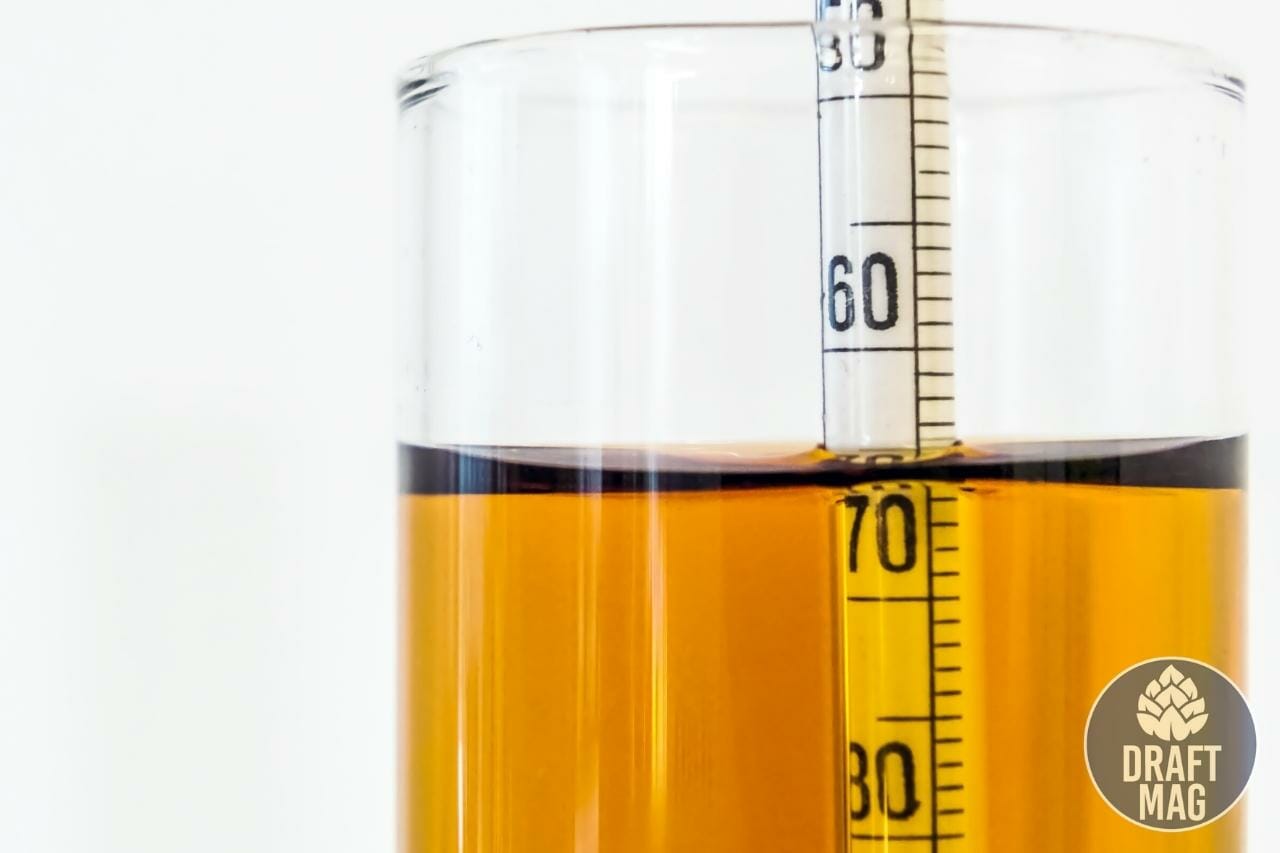 Refractometer vs Hydrometer is an age-old debate that needs much elaboration for anyone who wants to perfect their craft beer-making art.
Refractometer vs Hydrometer is an age-old debate that needs much elaboration for anyone who wants to perfect their craft beer-making art.
You need to know these equipment in detail before starting your homebrewing journey.
These instruments are essentially used to measure the specific gravity (SG) of any liquid you are about to start fermenting. This article runs into the details of both these devices and helps you choose one.
Hydrometer vs Refractometer: Comparison Table
As the fermentation process starts and progresses, the yeast in the wort will slowly eat up the sugar present, and the readings in both these devices will start dropping.
So how does one determine what is the best device for craft beer, a hydrometer or a homebrew refractometer?
| Hydrometer Advantages | Hydrometer Disadvantages | Refractometer Advantages | Refractometer Disadvantages |
| Cheap and cost-effective | Fragile and easily breakable | High accuracy in beginning stages of brewing | Expensive and not very cost-effective |
| Does not need regular calibration | Wastes large amounts of wort | Uses very little sample liquid | Does not work well at the final stages of brewing |
| High risk of contamination | Very little chance of contamination | Needs regular calibration | |
| Can’t work without other equipment | Works independently | ||
| Sample liquid needs to be of controlled temperature | Temperature control is not crucial |
What Are the Differences Between a Refractometer and Hydrometer?
The main difference between a refractometer and a hydrometer is the stage at which they exhibit the most accuracy: you use a refractometer during the later stages of fermentation, while a hydrometer is used before the fermentation process begins.
A refractometer is notably more expensive than a hydrometer.
What Is a Hydrometer Best For?
A hydrometer is best for beginners during every step of the brewing process. It needs a lot of care while handling so that it does not shatter at the smallest of shocks.
- Use a hydrometer for brewing when you are home brewing your beer, and you have a lot of space to handle the fragile hydrometer.
- This device is the most effective if you are running on a low-budget brewing project.
- You can use this during the later stages of fermentation. When the sugar levels are low, you need a more accurate measure of the specific gravity.
- It comes in handy when you have enough liquid to spare. A hydrometer always uses a lot of sample liquid (which generally goes to waste) to test the sugar level.
What Is a Refractometer Best For?
Refractometer is best used at the beginning of the fermentation process.
- The refractometer accuracy is instrumental before the fermentation process begins since the sugar levels are high.
- Use a refractometer for brewing when working with a very small batch of liquid.
- It comes in handy when you need very precise readings of the sugar levels in your wort.
- Use a refractometer for brewing if your sample liquid is very hot. This device can handle hot liquid and still do perfect readings.
The refractometer will use or waste very little liquid to measure the exact values.
No matter who you are, if you are starting on the craft beer journey, you need to learn about these two essential devices. If you want the process to be budget-friendly, a hydrometer is a way to go. A refractometer will be a wise choice if you work in a small, controlled space.
Uses of a Refractometer and Hydrometer
A refractometer after fermentation is not of much use. Hence, a hydrometer is nearly unavoidable, and no matter who you are – a first-time home brewer or an expert, you definitely need to have one of these in your kit to perfect the process.
When the fermentation and brewing process moves forward, the yeast in the brew starts to dissolve the sugar. At this stage, a brewer should shift to using a hydrometer to effectively measure the specific gravity and determine the exact stage the brew is at.
Here are some of the reasons why you need these devices for brewing:
- Measuring the accuracy of your mashed malt/raw ingredients
- Finding the exact alcohol amount of a brewed liquid
- Determining the exact stage of the brewing process through sugar levels
- Regulating every step of the process to perfect the brew and taste
- Calculating the ABV (Alcohol by Volume) of the brew through specific gravity
– Should You Have Both Equipment?
In an ideal case scenario, a homebrewer must have both equipment to strike the ideal balance and perfect their craft of brewing beer during the process. But if one has to choose, a hydrometer is the most essential among the two devices above.
Though the hydrometer is fragile and wastes some of the liquid, it is much more accurate and cost-effective. If you have the bandwidth and the budget to invest in another device, you should buy the refractometer to ace the brewing process.
-
Determining the ABV
The measurement of specific gravity will help you determine the Alcohol by Volume (ABV) of the product produced at the end of the fermentation and brewing process. It can be simply defined as the ratio of the density of the liquid in question to the density of water.
You need to own a specific gravity measuring device – a refractometer or hydrometer, to perfect your brewing process and evaluate your results. You must keep track of these measurements to ensure consistency in your brews.
– Hydrometer for Brewing
A hydrometer is very cost-effective elementary equipment and is readily available. However, it is extremely fragile to handle and prone to breaking.
-
Wastage of Large Amounts of Sample
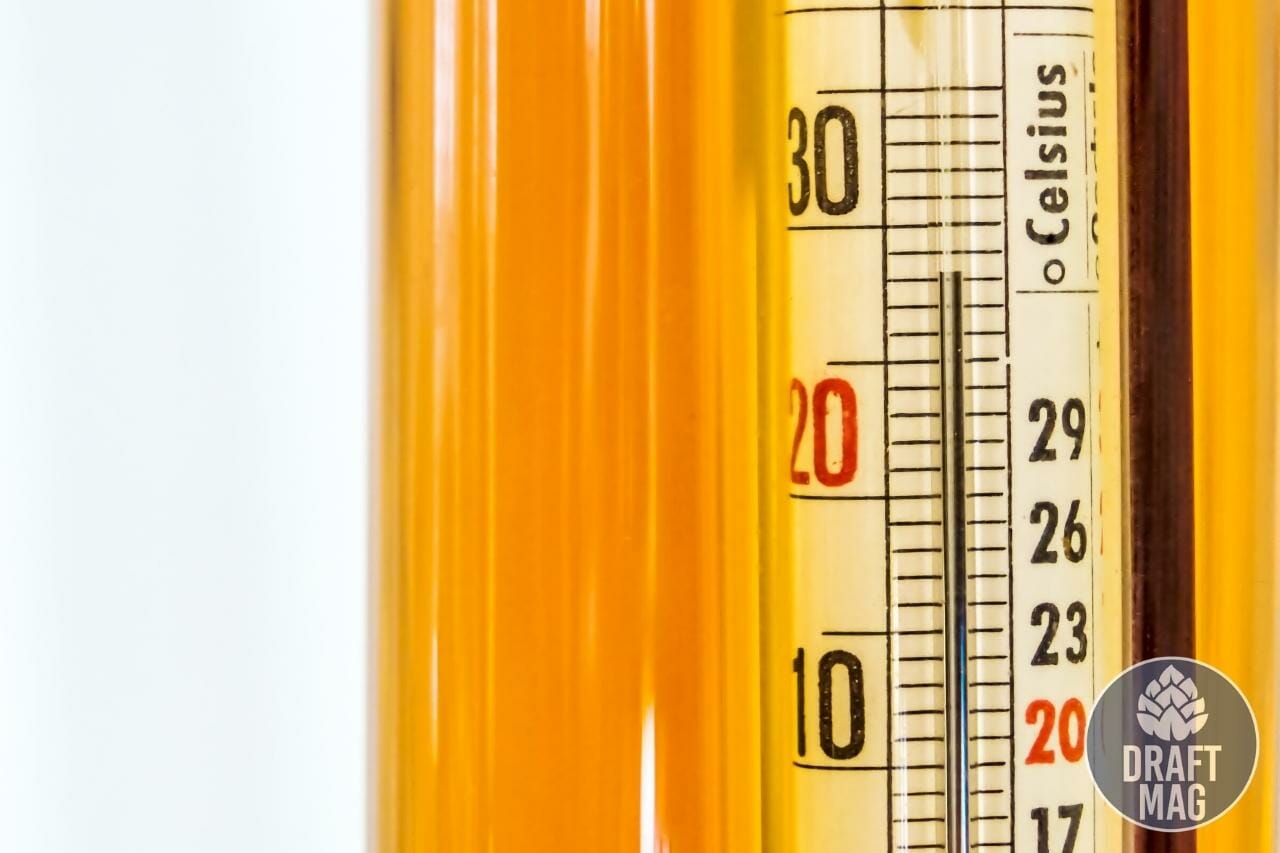 While you use a hydrometer for brewing, the device collects some of the beer inside it every time you try to dip it in the liquid to check its density.
While you use a hydrometer for brewing, the device collects some of the beer inside it every time you try to dip it in the liquid to check its density.
This measurement is a daily process, which means you waste some amount of fermenting liquid every day.
-
Economic Value
A hydrometer is cheap and does not need any regular calibration to work. However, it can break easily, and you will need to buy new ones frequently.
-
Contamination Risks
A brewer has to frequently open the whole lid of the fermenter to check the sugar level with the hydrometer. Every time one does this, there is a high risk of contaminating the liquid. One needs to sanitize the device every single time to avoid complete contamination and wastage.
Some brewers even use the hydrometer directly on the wort to avoid wastage. This increases the risk of contamination. No matter which way you work with the hydrometer, the risks are high.
-
Can’t Work Without Other Equipment
A hydrometer can not function independently. To work with a hydrometer, you need a whole kit of equipment to function properly.
- It needs a big thief to collect the sample liquid from the bigger fermenter.
- You would also need a graduated cylinder.
- Lastly, you need a thermometer to know the accurate temperature of the wort before using the hydrometer.
– Refractometer for Brewing
A refractometer may essentially be measuring the same thing as a hydrometer, but the process of doing so is vastly different. This device works by measuring the refraction of light through the liquid and finding the sugar level based on it.
-
Minimum Wastage of Sample Liquid
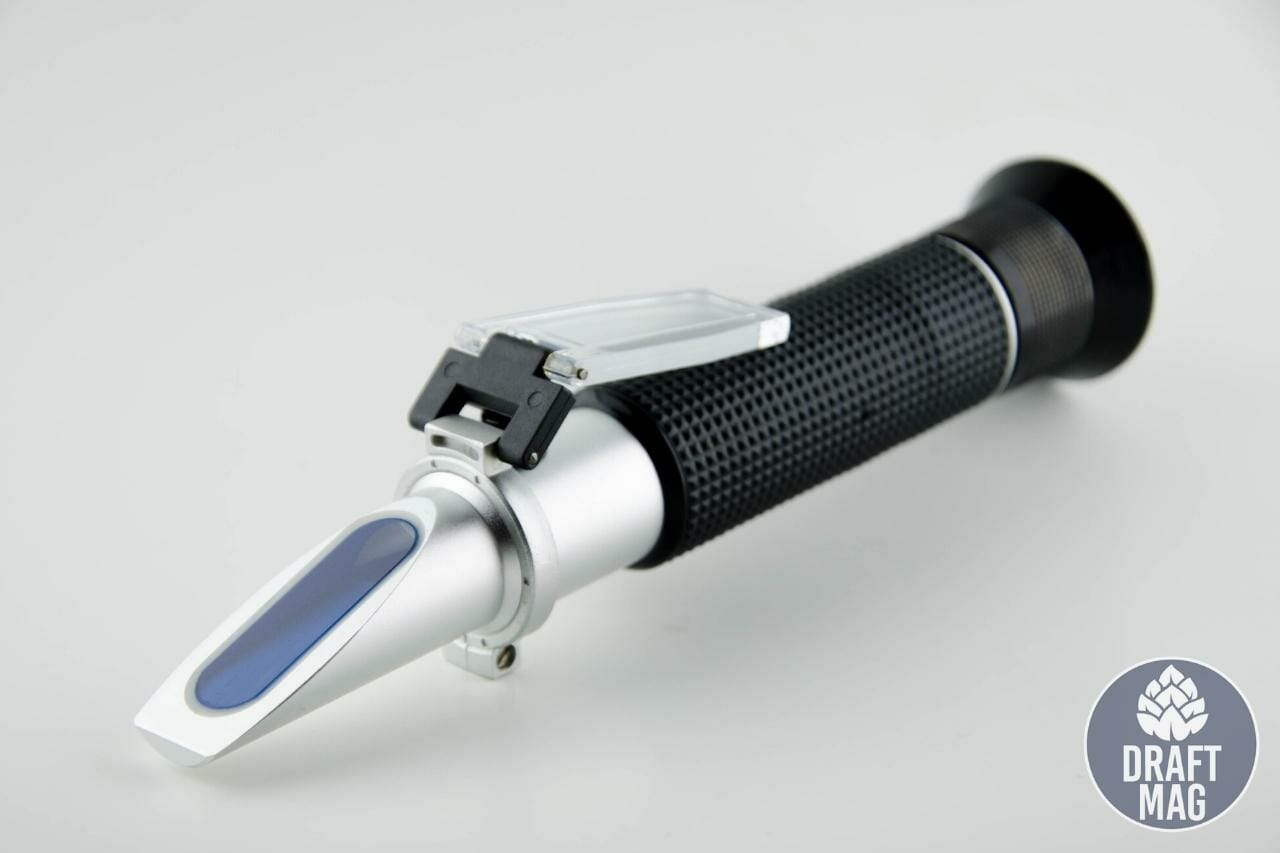 It uses very little liquid sample (as little as a drop) to determine the amount of sugar present in it to ultimately determine its specific gravity.
It uses very little liquid sample (as little as a drop) to determine the amount of sugar present in it to ultimately determine its specific gravity.
Due to this low use of the sample liquid, the wastage is very little. This means you can take samples and test sugar levels as many times as needed.
-
It Has Relatively Better Accuracy
The refractometer accuracy is quite good when the fermentation process starts, and the liquid’s sugar level is high. The accuracy keeps decreasing as the yeast starts reducing the sugar level. When the sugar level is low, the reading becomes more inaccurate.
-
Economic Value
One must also remember that a refractometer is not a very readily available device that you’ll find in a basic homebrewing kit. One needs to invest some money to buy one of these. This device also needs regular calibration to maintain the exact refractometer accuracy and do accurate readings.
Despite this, a refractometer is extremely useful when you have minimal space to conduct your brewing process and do not have a lot of space to move around freely.
-
Temperature Measurement Is Not Crucial
As a refractometer uses a very little sample to measure the specific gravity, the temperature is barely an issue. A drop of the wort needs seconds to cool down before the reading can be taken, so it needs no additional thermometer. Many refractometers in the market also have temperature regulator options for more accuracy.
-
No Additional Equipment
Unlike a hydrometer, a refractometer does not need an additional thief, graduated cylinder, or thermometer to function. This device works and measures independently.
-
Low Risk of Contamination
Since a refractometer does not use a big thief to collect the sample liquid, you do not have to open the fermenter lid during collection. The sample is collected with a pipette that can easily be put in through the airlock. When you do not expose the whole liquid to outside air and germs, the chance of contamination goes down.
FAQ
– What Is a Hydrometer?
A hydrometer is a simple device that you fill up with the sample liquid in concern, in this case, craft beer. Then the hydrometer floats on the said liquid sample and displaces some of it to indicate a particular measurement. It uses the scale encrypted on the body of the hydrometer to determine specific gravity.
– What Is a Refractometer?
A refractometer is a homebrewing device that uses light refraction to understand and scale the amount of sugar dissolved in any particular liquid. The device measures the angle of refraction when light enters the liquid being tested. It is then correlated with the pre-established refractive indexes. It is more complicated than a hydrometer.
Endnote
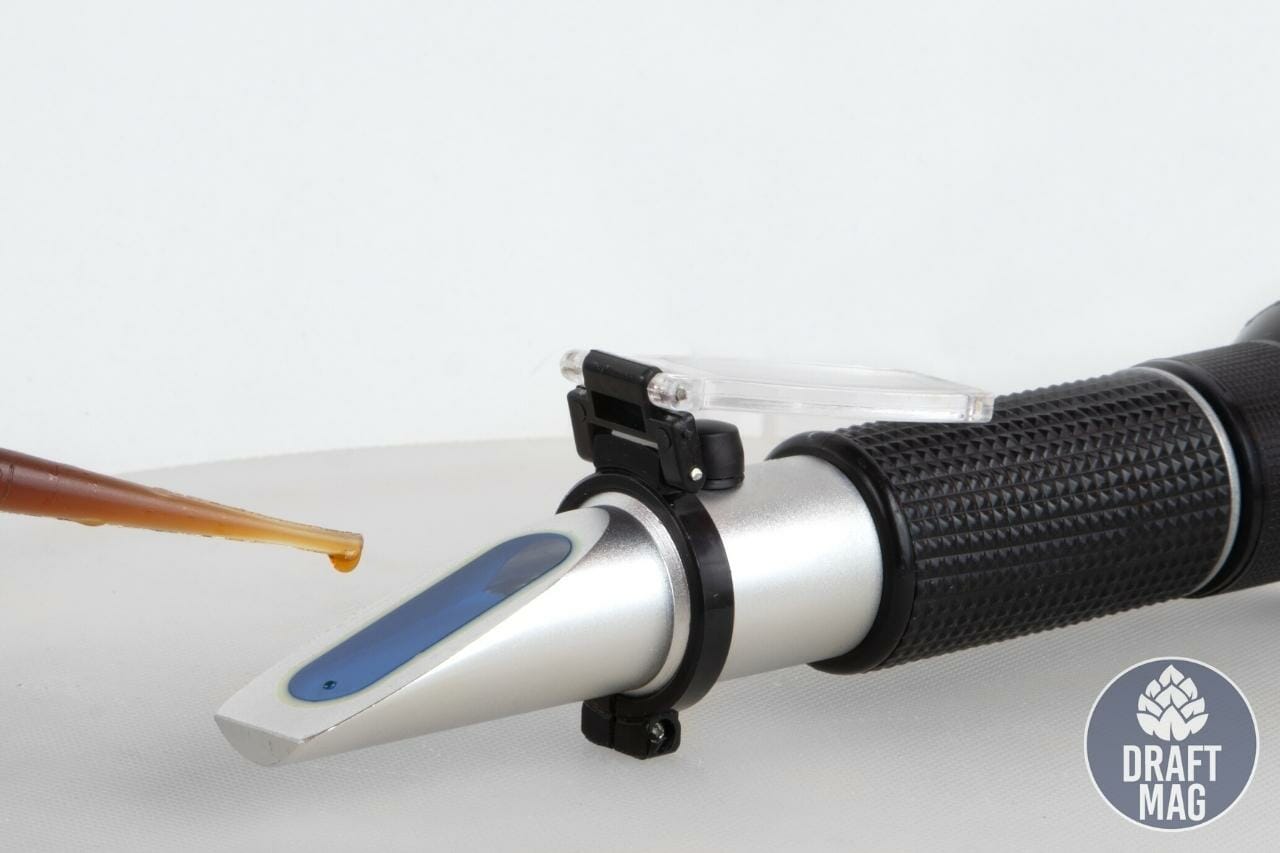 It is safe to say that there is no debate on hydrometer or refractometer. It is more about knowing the pros and cons of both these devices to understand why and when you need to use each of them during what stage of the brewing process.
It is safe to say that there is no debate on hydrometer or refractometer. It is more about knowing the pros and cons of both these devices to understand why and when you need to use each of them during what stage of the brewing process.
In the end, you have to choose with these in mind:
- A hydrometer wastes a lot of sample liquid; a refractometer doesn’t.
- Both are essentials in your home brewing journey.
- A refractometer is accurate at the beginning of the brewing, while a hydrometer is effective throughout the brewing process.
- A hydrometer needs other equipment to function; a refractometer is independent.
- A hydrometer risks contamination of the wort; a refractometer doesn’t.
Both of these devices have their upsides and downsides, but they are essential parts of the brewing process of any alcohol. Make sure you weigh your requirements and budget before choosing one.

